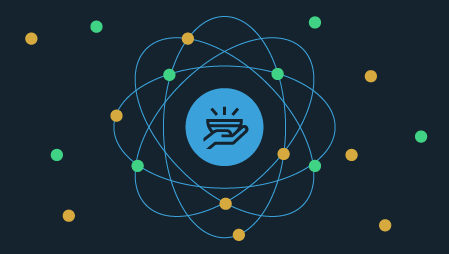Ready to learn Cybersecurity? Browse courses like Cyber Security for the IoT developed by industry thought leaders and Experfy in Harvard Innovation Lab.
Very few organizations have fully incorporated all relevant risks and threats into their current digital strategy, research finds.
Today, all organizations are digital by default. However, it has never been more difficult for organizations to map the digital environment in which they operate, or their interactions with it. Every organization's technology infrastructure is both custom-made and increasingly complex, spanning networks that consist of tools and technologies that may be on-premises or in the cloud — or, quite commonly, a combination of both.
Yet there is no reward without risk. Digital business inherently means utilizing new technology, connecting devices and operating platforms, embracing different ways of working, building large-scale data silos, and so on. The convergence of Internet of Things networks with what were once separate and self-contained — and therefore more manageable — systems represents a fundamental change.
The World Economic Forum now rates a large-scale cybersecurity breach as one of the five most serious risks facing the world today. The scale of the threat is expanding drastically: by 2021, the global cost of cybersecurity breaches will reach $6 trillion according to Cybersecurity Ventures' 2017 Cybercrime Report, double the total for 2015.
Spending Keeps Soaring
Coping with digital challenges and mitigating risks still represents a major burden for organizations across the board. To gain cyber resilience and combat cybercrime, organizations continue to increase their spending on cybersecurity. Of 1,200 C-suite leaders and other senior executives polled by EY for the 2017-18 Global Information Security Survey (GISS), 70% say they require up to 25% more funding, and the rest require even more than this. However, only 12% expect to receive an increase of more than 25%.
For many organizations, the worst may have to happen for these calls to be met. Asked what kind of event would result in cybersecurity budgets being increased, 76% of survey respondents said the discovery of a breach that caused damage would be lead to greater resources allocated.
By contrast, 64% said an attack that did not appear to have caused any harm would be unlikely to prompt an increase in the organization's cybersecurity budget. This is higher than the figure reported last year — which is concerning, given that an attack can cause harm that isn't immediately obvious.
The Threat Landscape Evolves at Lightning Speed
EY's survey shows that organizations are also increasingly fearful about the vulnerabilities within new channels and tools. For example, 77% of survey respondents worry about poor user awareness and behavior exposing them to risk via a mobile device; the loss of such a device and the potential for loss of information and an identity breach are a concern for 50%, according to EY's findings.
With so many disparate threats — and perpetrators that could be anyone from a rogue employer to a terrorist group or a nation-state — organizations must be vigilant across the board and be well acquainted with their own threat landscape. All the more so since attackers have easy access to malware and sophisticated tools — and can even hire cybercriminals — online.
Employees and criminal syndicates are seen as the greatest immediate threats. For many organizations, the most obvious point of weakness will come from an employee who is careless or fails to heed cybersecurity guidelines.
Actions Needed
Organizations may feel more confident about confronting the types of attacks that have become familiar in recent years, but they still lack the capability to deal with more-advanced, targeted assaults. Overall, 68% of respondents have some form of formal incident response capability, but only 8% describe their plan as robust and spanning third parties and law enforcement.
To improve their chances of fighting back against cyberattackers, organizations will have to overcome the barriers that currently make it more difficult for cybersecurity operations to add value. For example, 59% of GISS respondents cite budget constraints, while a similar number lament a lack of skilled resources; 29% complain about a lack of executive awareness or support.
The so-called disconnect between cybersecurity and the C-suite still persists, with a mere 36% of corporate boards having sufficient cybersecurity knowledge for effective oversights of risks, as highlighted in the EY report. Ultimately, organizations that fail to obtain executive support and devote the resources necessary for adequate cybersecurity will find it very difficult to manage the risks they face.
The findings suggest organizations increasingly recognize this: 56% of respondents say either that they have made changes to their strategies and plans to take account of the risks posed by cyber threats, or that they are about to review strategy in this context. However, only 4% of organizations are confident they have fully considered the cybersecurity implications of their current strategy and incorporated all relevant risks and threats.
Conclusion
Due to their digital transformation, organizations inevitably expose themselves to greater cyber-risks and an ever-increasing dependency on their IT. Breaches and outages are on the rise. Although both have always been painful, the business impact is growing exponentially; if organizations are offline, revenue streams are cut off and reputation is at risk. With security incidents continuing to rise, it is clear that attackers are finding new sources of profit even as companies prioritize the protection of their digital assets.
Many businesses have increased investments in security, but these investments often follow an approach that utilizes technology to build a defense. Increasingly, firms will realize that they must also detect the inevitable breaches and respond quickly.
Beyond the technical aspects, organizations will also begin building business processes that enhance security, and they will implement end-user training to mitigate human error. In short, companies must shift their security mindset from technology-based defenses to proactive steps that include technology, process, and education. There is no doubt that companies are taking security more seriously, but now they must realize that modern security demands a different mentality rather than just more of the same.
First appeared on DARKReading



